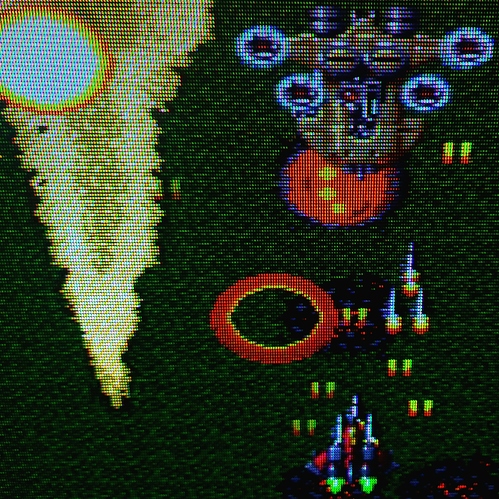No problem, I’m also pretty busy and completely understand it.
To measure the colors with Windows 11 Auto HDR enabled, I set your reshade port of the shader to the neutral preset and colors / whitepoint to r709 and of course to SDR, as W11 now does the tonemapping or mapping from rec.2020 back to rec.709 if that’s the more correct term for this scenario.
When I measure your HDR tonemapping algorythm, I disable W11 AutoHDR and measure the colors with HDR enabled in the Megatron reshade menu and otherwise same settings.
I am aware, that we are trying to achieve rec. 601/709 colors in the “rec. 2020 container” which the TV uses when HDR is enabled. I just mentioned, when I measured your HDR tonemapping and W11 tonemapping, that there are differences.
And the green is even undersaturated when compared to the rec.709 triangle, which is what I used as a reference in all my measurements (the dark triangle in the screenshots is rec.709 and the white triangle the actual measurement).
Windows 11 AutoHDR is trying to keep saturated colors beyond rec. 709, which is not correct for the case we want to use it, just like you said.
The Megatron HDR tonemapping is more close to the rec.709 Gamut, but the green primary color has a slight “lime” colored tint to it, the red primary is still slightly oversaturated and the white point is heavily shifted towards magenta which gives the overall image a pinkish tint as you can see here:
To measure the colors, I simply created test patterns within Windows paint.
For Red RGB 255,0,0 - for Green RGB 0,255,0 and for Blue RGB 0,0,255
These test patterns are then loaded within Retroarch image viewer with your shader applied (SDR setting when W11 AutoHDR is used and HDR setting when Megatron HDR tonemapping is used and W11 AutoHDR deactivated).
An old i1 Pro 1 spectrometer would also do the job for the beginning, if you want to buy one, as these meters are very stable over time. I have seen those on eBay for around 100 to 200 euros.
And here is the measurement, when I use just the plain HDR from Retroarch without any shader applied:
This measurement is taken with color temperature at my TV set to warm 2, which is close to 6500K. The mapping of the colors from Retroarch in HDR seems very similar to the mapping of Windows 11 AutoHDR.








 Ok so I went back doing some side by side experiments with my PAL Sony 2730QM PVM and MiSTer (not original console) and my PC plugged into my Samsung S95B QD-OLED and having put everything to neutral and using PAL I get a pretty accurate colour match eyeballing it whereas before Ive never achieved this. With yours
Ok so I went back doing some side by side experiments with my PAL Sony 2730QM PVM and MiSTer (not original console) and my PC plugged into my Samsung S95B QD-OLED and having put everything to neutral and using PAL I get a pretty accurate colour match eyeballing it whereas before Ive never achieved this. With yours 